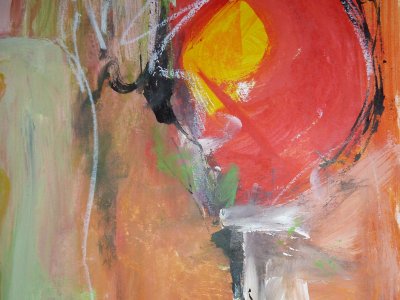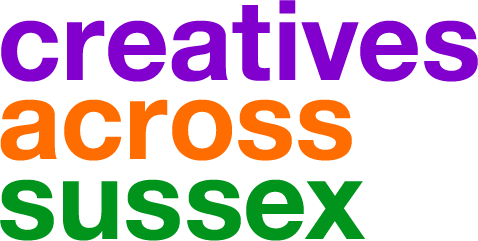Harbour House / Events / Tue 15 to Sun 27 Jul 2014 (2 weeks)
Left to Right

Jane Ellis, Alan Jones and Louis Victory are friends who have been painting and drawing together for several years. Although they admire and draw inspiration from one another’s work, their styles range widely from abstract to representational, and everything between. The media they use also crosses boundaries from digital photography to traditional painting.
The title of the exhibition, ‘Left to Right’, expresses this diversity as well as a respect for the value of different approaches.
Jane Ellis feels that the temptation to reproduce accurately what we see is worth resisting. What she strives for is more an emotional response: to explore, expand, and develop what makes her react powerfully to a subject, a view, a breathtaking instant of light or a piece of music.
“I attempt bold and energetic abstractions which express my feelings, mostly about the landscape around me. I spend a lot of my day immersed in the landscape of South Devon, and in the vivid colours and seasonal changes at the plant nursery where I work. I am addicted to observing the quality and intensity of the light as it changes through the day and in the course of a year. I work towards seeing the world with greater intensity, abstracting subjects more economically, and simply seizing the beauty of what’s around me. To achieve this I am constantly making sketches and photographs which quickly capture essence and light.
My responses are very personal, and the tools and techniques I use are stimulated by the subject, the nature of the painting, and the way it progresses. This demands a variety of mark-making, and a multi-media approach. Although my work is primarily abstract, I always need a definite connection to the subject matter, and mostly hope to depict a hint of the original inspiration. But sometimes I feel my pictures take on an independent life, even when I do achieve some link with the joy that initiated the work.”
Alan Jones, who is dyslexic, says that the only subject in which he showed ability at school was art. He eventually trained as a teacher, with art being his main subject. After a few years working in secondary schools, and teaching English in Japan, he became an assistant director at the Royal Court Theatre in London. He then made almost no art for about thirty years, until he moved to Devon in 2002.
“Since then I’ve revived my skills, taking lessons from Ashton Chadwick, Jeremy Scrine and Anita Reynolds (mentors to the three of us). I have had three exhibitions of my work: as part of the Devon Art Trail; at the Flavel in Dartmouth; and in April 2013 at Birdwood House in Totnes, the success of which enabled me to take a significant step forward as an artist.
I am interested in interpreting what I see and feel, which perhaps relates to my training as a counsellor. I like to absorb colours and light. I love reflections and shadows on water. There is also something in the combination of man and nature that fascinates me: for instance mould, lichens and mosses growing over stones cut carefully by men in previous years. Some people have called my work ‘lyrical’. Some of my pieces may be considered naïve, others clearly demonstrating a more conventional technical ability. The response to my work that I like most came from an Australian who said ‘your work is really full’ ".
When Louis Victory was eight, his father bought him a second-hand camera. By the time he was eleven he was a devoted photographer with a darkroom in the corner of his bedroom. In his teens he started to draw and paint as well, inspired by his artist mother, and by the unspoilt Cambridgeshire countryside around his home.
Later, as an architect, he leant on these skills as a designer, and gradually developed a passionate interest in the imagery of townscape, landscape and the strangely comparable topography of the human body.
“Whilst I have kept my photography alive at a semi-professional level throughout my career, I have only returned to drawing and painting in the last 10 years. For me, there should be no artificial boundaries between one type of image-making and another. The only thing that matters is the emotional impact of the end result. I move happily between drawing, painting, and photography, and mix abstraction and realistic representation to best suit my personal response.
Extending this flexibility of approach, I believe that words and images can be mutually enhancing, and I am developing poetry driven by images, combining the two into a single artifact. My ‘Holding Series’ of 8 images with poetry will have its first showing in this exhibition. I have often published and exhibited photography, but this is an occasion when I can also bring a wider range of my work into public view. My very varied approach bridges what we have called the ‘Left to Right’ spectrum”.
For more information visit http://www.harbourhouse.org.uk/gallery-lefttoright14.html
